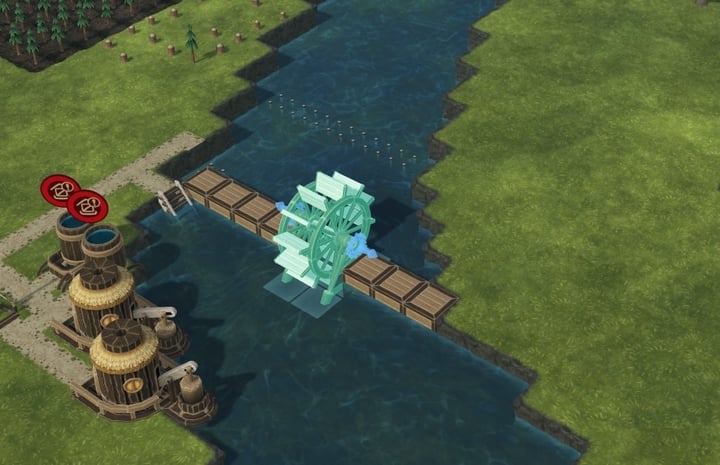Timberborn - Water Wheel not Working Fix; Produce Power Once Again
Many Timberborn players experience an issue where the water wheel stops working. In this guide, you will learn how to fix it and produce power again.
1

The water wheel is an important structure for Timberborn players, as it produces power necessary for other buildings to function. However, it can be tricky to construct the water wheel properly for maximum power output, and in the worst case scenario, an incorrectly placed water wheel may stop producing power altogether. This may cause players to think they’ve encountered a bug. However, most often it’s a result of complex game mechanics related to water. If you’ve encountered a water wheel malfunction in Timberborn, or want to avoid the problem, read on. With our tips you will be producing power in no time.
Water wheel – tips for construction
In order to make sure your water wheel in Timberborn works properly:
- Place the water wheel parallel to the water flow,
- Make sure the water wheel is near the middle of the body of water,
- Locate a place with a strong current; a river with visible waves or the base of a waterfall,
- Redirect the water flow to the wheel using dams or platforms like in the picture below, so the water isn’t flowing round it:

Using dams will also help to hold water in to prepare for the drought.
- Build your water wheels in separate locations and connect them with shafts to make sure they aren’t interfering with one another – too many water wheels on one river will slow down the flow and lower power output.
Water wheel not working - solution
If your water wheel in Timberborn is not producing power, check for these common issues:
- Make sure nothing is blocking the flow or water in and out of the wheel,
- Make sure your water wheel isn’t in the corner of a body of water,
- Make sure far-away structures are connected with shafts so the power can be transmitted,
- Check the water level – the optimal depth for the water wheel with 3x2 dimensions is 2 meters.
If you’re having trouble finding a place for your water wheel, you can build a stream gauge, a structure which tracks water flow and indicates the place with the strongest current.
Keeping a water wheel turning during drought will be difficult if you’ve not prepared beforehand. There are two options: you can dam the furthest point downstream and use advanced structures with water pumps and windmills to create a return water cycle. Alternatively, you can slowly release a dammed-in reservoir upstream through an one block wide gap towards the water wheel.
However, those tricks are meant for late-game and may be difficult to pull off for an average player. Beginners are recommended to prepare for the drought by damming the river off to keep crops from dying and using alternate sources of power: windmills, batteries or engines.
Check out our Timberborn Guide, which will teach you all there is to know about making a good start in the game and dealing with common issues.
1
Latest News
- ARC Raiders dev acknowledges critics for the first time. „We are not deaf to concerns,” assures Virgil Watkins
- Was to be a hit for years, disappears without a trace. Anthem community says goodbye with slogan: „Strong alone, stronger together”
- Forget the dozens of hours in Baldur's Gate 3. New Divinity will get you stuck in the main menu forever
- He highlights the biggest mistake made by the industry giants. „The future belongs to smaller teams,” says director of Assassin's Creed: Unity
- „It was not our call.” Larian CEO explains why Baldur's Gate 3 will never appear on Nintendo consoles


